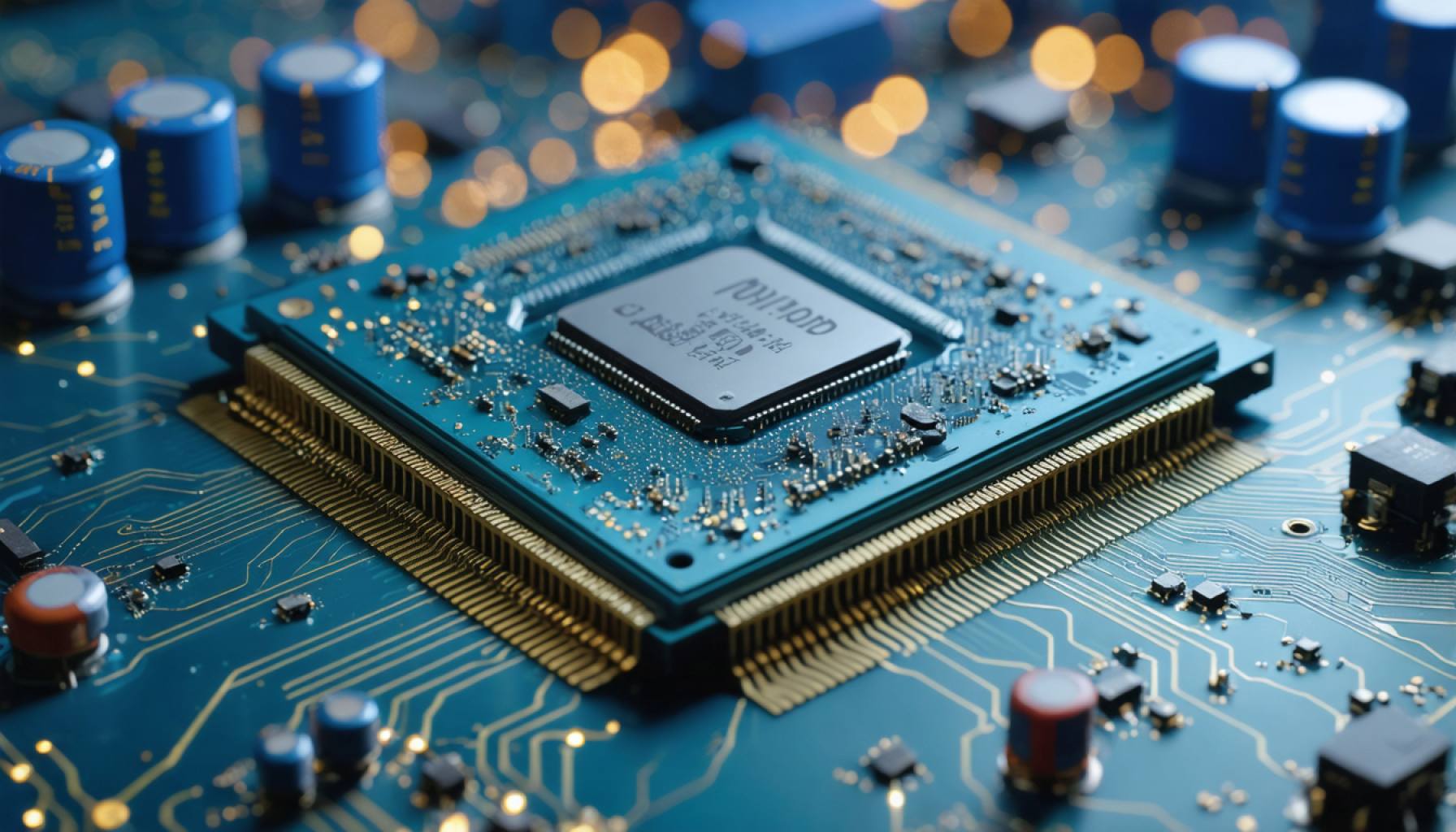- Global semiconductor equipment sales surged to a record $117.1 billion in 2024, rebounding after a previous year’s dip.
- Wafer processing equipment sales increased by 9%, driven by innovation and global investments, especially in high-bandwidth memory (HBM) and advanced packaging.
- China led the market with a 35% investment surge, emphasizing domestic chip production aided by government support.
- Korea maintained its significant position with steady growth in memory solutions demand.
- Taiwan experienced a 16% decline in equipment sales due to reduced demand for new capacity.
- Europe saw a 25% sales decline, impacted by economic challenges in the automotive and industrial sectors.
- North America saw a 14% rise in investments, favoring domestic manufacturing and advanced technology nodes.
- Emerging markets recorded a notable 15% increase in chip production investments.
- The industry in 2024 highlights technological advancements, regional investment narratives, and AI-driven transformations.
A surge of electric demand transformed the landscape of the semiconductor equipment market in 2024. Global sales rocketed to a record-breaking $117.1 billion, signaling a triumphant resurgence after a modest pullback in the previous year. This vibrant growth, assessed by the Worldwide Semiconductor Equipment Market Statistics, unveils the strategic plays and investments that have defined the industry’s trajectory.
Picture a bustling assembly floor where wafer processing equipment sizzles with newfound vigor; sales leaped by 9 percent, reflecting the undying thirst for innovation. This resurgence is not merely a tale of numbers but a narrative sculpted by heightened worldwide investments. The push for expanding capacity, especially within the realms of high-bandwidth memory (HBM) and advanced packaging technologies, paints a broader canvas—one powered by artificial intelligence and enveloped in cutting-edge technology.
Amidst this electrifying milieu, China’s market lead resonated with a bold 35 percent surge in investments, hitting the $49.6 billion mark. This leap underscored the nation’s strategy to bolster domestic chip production through governmental backings and aggressive capacity expansions. Meanwhile, Korea cemented its position as a major player with strategic but more modest growth, as demand for memory solutions held steady.
However, the story ventured beyond victories. Taiwan faced cooled enthusiasm due to a decline in demand for new capacity, marking a 16 percent fall in equipment sales. In Europe, economic challenges dampened spirits within the automotive and industrial sectors, resulting in a stark 25 percent dip. This juxtaposition of vigorous growth and uneven demand paints a gripping tale of a market in constant flux.
Across the Atlantic, North America embraced a renaissance with a 14 percent rise in investments, driven by strategic shifts toward domestic manufacturing and advanced technology nodes. Emerging markets within the Rest of the World shone with a notable 15 percent increase, as they ramped up chip production efforts.
The year 2024, in its entirety, stands as a testament to the ebbs and flows of this high-stakes industry. Technological advancements, regional narratives of investment and demand, and AI-driven transformations collectively script an engaging story. The world of semiconductor manufacturing, dynamic and multifaceted, continues to forge ahead—leaving us pondering what next heights it might reach and what challenges await in the relentless race for innovation.
Surging Semiconductor Demand Charts New Frontiers for 2024 and Beyond
A Rapidly Evolving Semiconductor Landscape
The semiconductor equipment market’s unprecedented rise to $117.1 billion in 2024 marks a significant milestone in its recovery and expansion. This growth underscores a global tech renaissance, driven by rising demands for innovative technologies like high-bandwidth memory (HBM) and advanced packaging. Artificial intelligence continues to catalyze these developments, emphasizing the need for robust, advanced semiconductor solutions.
How-To Adapt Amidst Semiconductor Industry Shifts
– Invest in Emerging Technologies: Companies should focus on AI-enhanced processing tools and advanced memory solutions to align with current market demands.
– Expand Capacity Wisely: Strategic investments in capacity expansions within key regions like China and Korea can help capitalize on governmental support and demand for memory and AI applications.
– Diversify Supply Chains: To mitigate regional downturns like those seen in Taiwan, diversifying supply channels and investing in local manufacturing capabilities is crucial.
Real-World Use Cases for Cutting-Edge Semiconductor Innovations
1. Artificial Intelligence: Advanced semiconductors facilitate AI applications in data processing and machine learning, enhancing performance and efficiency across industries.
2. 5G and Telecommunications: High-bandwidth semiconductor solutions support next-gen network infrastructure, improving connectivity and data flow.
3. Automotive Industry: Advanced semiconductors play a critical role in developing electric and autonomous vehicles, requiring sophisticated electronics for operation and safety.
Market Forecasts & Industry Trends
– Continued AI Integration: The adoption of AI in semiconductor manufacturing is expected to grow, improving production efficiency and lowering costs.
– Memory Demand Surge: Memory solutions, particularly for cloud computing and AI applications, will see sustained demand, driving the need for advanced technologies.
Regional Dynamics and Economic Influences
While China and Korea are seeing marked investment surges, regions like Taiwan and Europe are experiencing slower growth due to various external pressures. However, North America is driving investment in domestic manufacturing, highlighting a strategic pivot towards self-sufficiency.
Pros & Cons Overview
Pros:
– Increased capacity and innovation through strategic investments.
– Strengthening of domestic manufacturing and supply chain resilience.
– Enhanced performance and capabilities in advanced technologies.
Cons:
– Regional disparities may impact global supply chains and balance.
– Economic factors may inhibit growth in traditionally strong markets.
– Shift toward new technologies demands significant initial investment.
Actionable Recommendations
– Consolidate Supply Chains: Evaluate existing supply chains to ensure they are adaptable to market changes and regional vulnerabilities.
– Explore Emerging Markets: Engage with emerging markets like those in the Rest of the World to tap into their burgeoning semiconductor initiatives.
– Invest in R&D: Amplify research and development efforts to keep pace with technological advancements and anticipate future innovations.
By understanding and leveraging these trends, companies can effectively navigate the complexities of the semiconductor landscape, ensuring sustainable growth and competitive advantage. For more insights into how technology is shaping industries, visit Sematech and Semiconductors.org.




















